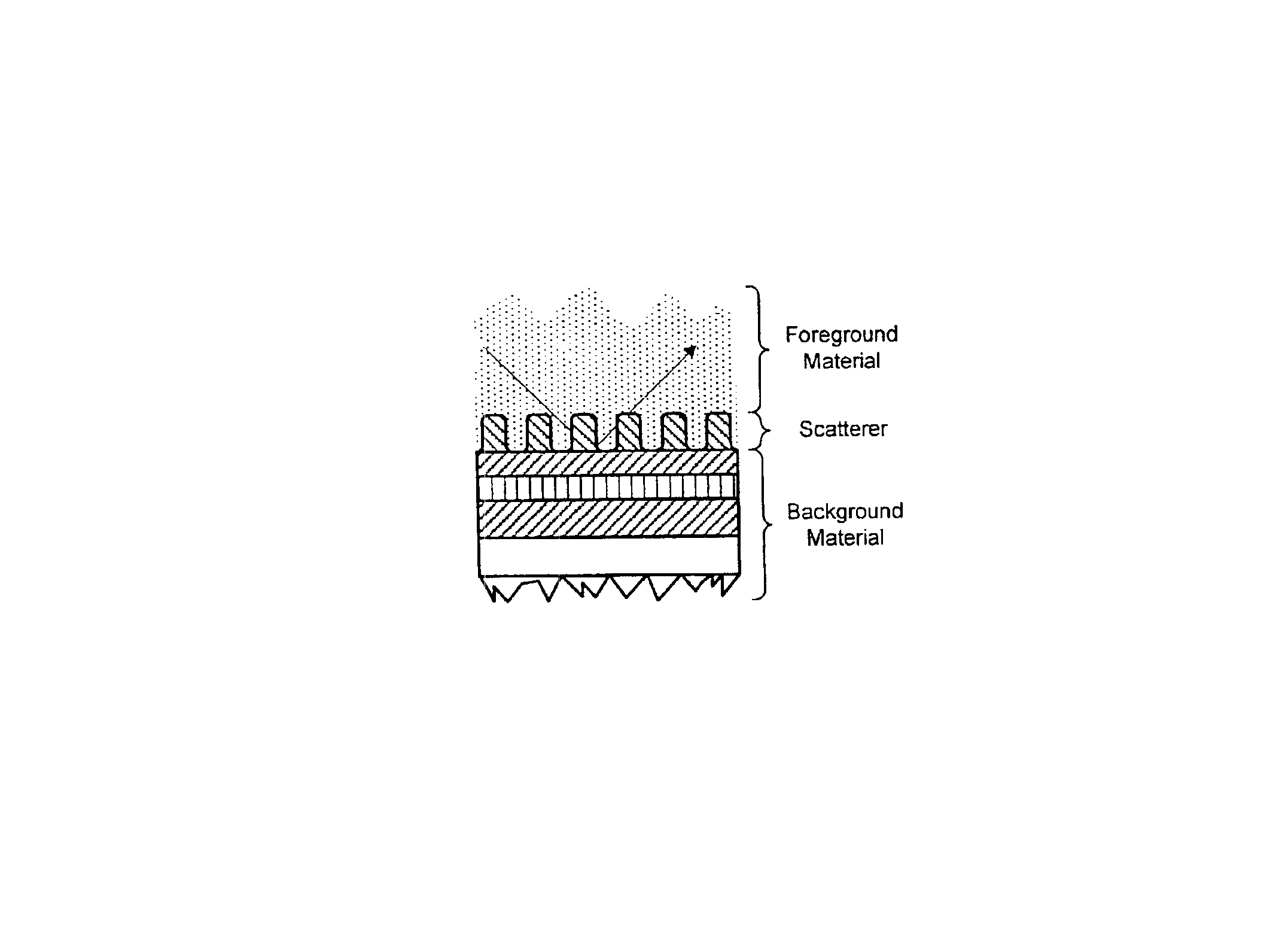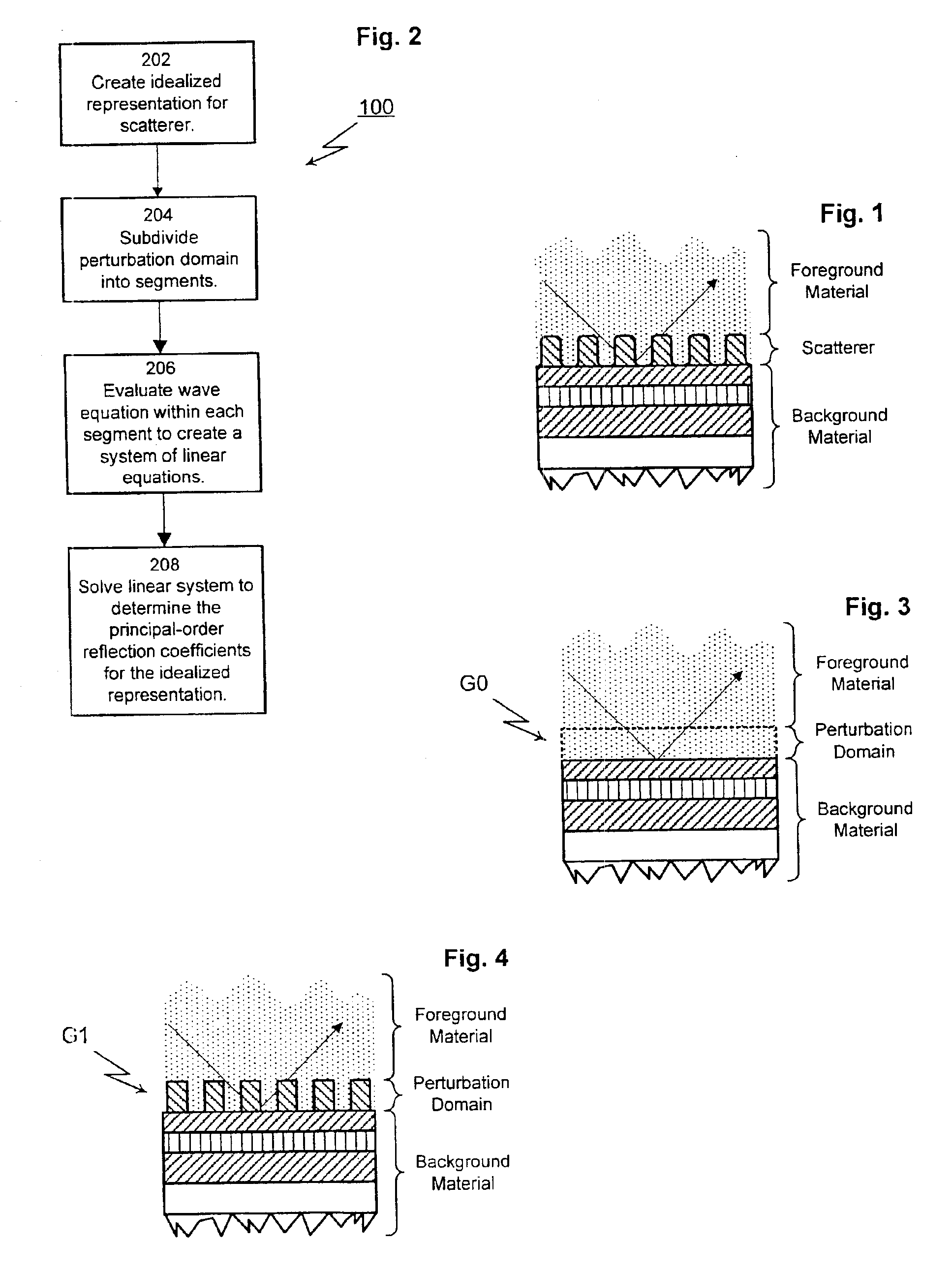CD metrology analysis using green's function
a technology of cd metrology and function, applied in chemical methods analysis, instruments, using wave/particle radiation means, etc., can solve problems such as accelerating numerical evaluation of scattering response, and achieve the effect of enhancing efficiency, efficient method for modeling optical diffraction, and enhancing efficiency
- Summary
- Abstract
- Description
- Claims
- Application Information
AI Technical Summary
Benefits of technology
Problems solved by technology
Method used
Image
Examples
Embodiment Construction
Overview
The present invention provides a method for modeling optical diffraction. The modeling method is intended to be used in combination with a wide range of subjects including semi-conductor wafers and thin films. As shown in FIG. 1, the cross section for a generic subject reveals a scatterer sandwiched between a foreground material and a background material. The scatterer is a periodic or isolated structure and may be two or three-dimensional. For semi-conductor wafers, single lines are typical examples of two-dimensional isolated scatterers. Parallel groups of lines evenly spaced are a common example of two-dimensional periodic scatterers. Single vias are an example of isolated three-dimensional scatterers. In groups, vias can be an example of periodic three-dimensional scatterer.
The background material includes each of the layers situated below the scatterer. For the case of semi-conductor wafers, the background material would typically be a multilayer dielectric film. The fo...
PUM
 Login to View More
Login to View More Abstract
Description
Claims
Application Information
 Login to View More
Login to View More - R&D
- Intellectual Property
- Life Sciences
- Materials
- Tech Scout
- Unparalleled Data Quality
- Higher Quality Content
- 60% Fewer Hallucinations
Browse by: Latest US Patents, China's latest patents, Technical Efficacy Thesaurus, Application Domain, Technology Topic, Popular Technical Reports.
© 2025 PatSnap. All rights reserved.Legal|Privacy policy|Modern Slavery Act Transparency Statement|Sitemap|About US| Contact US: help@patsnap.com



